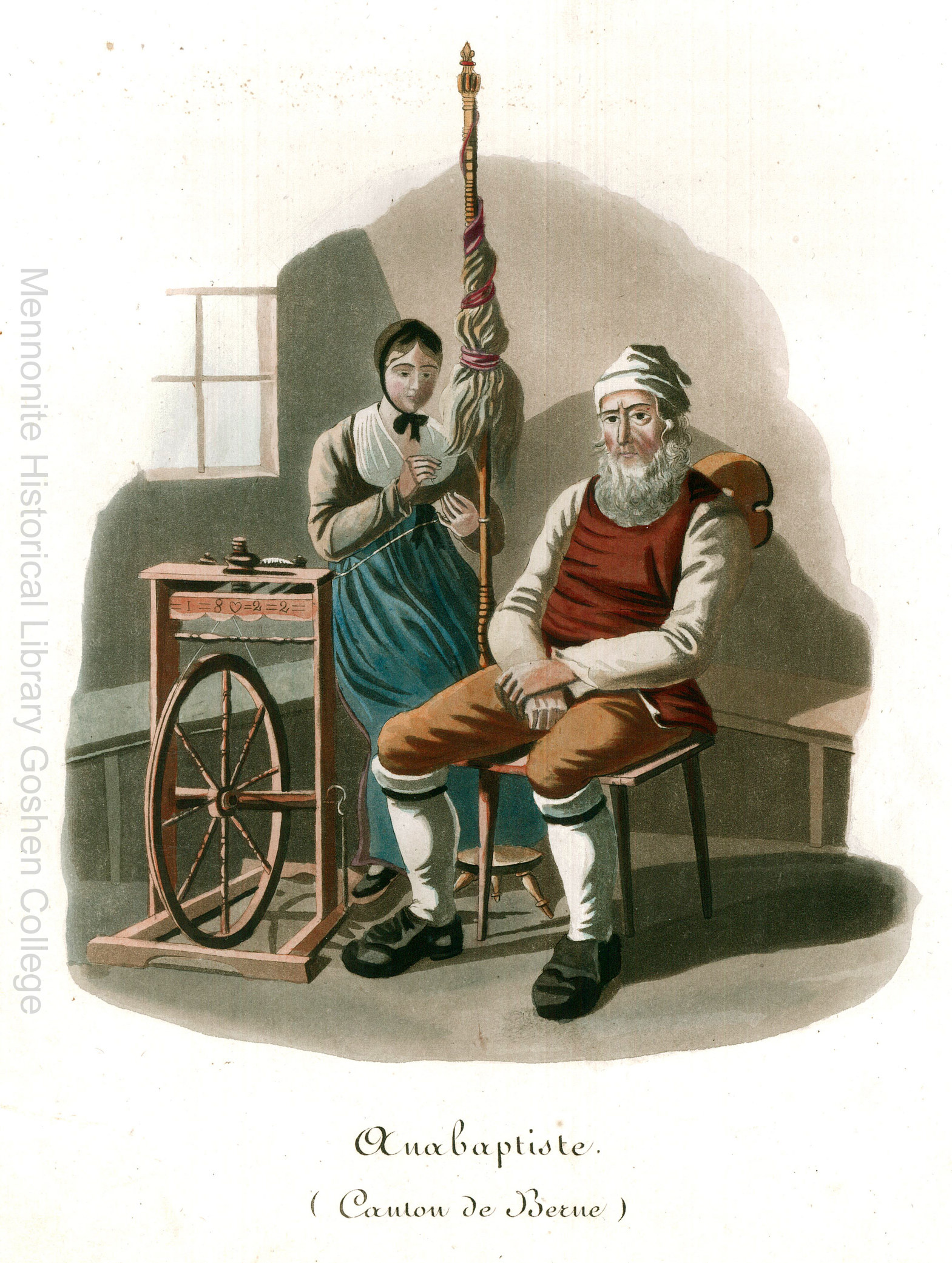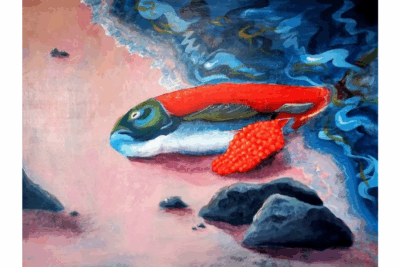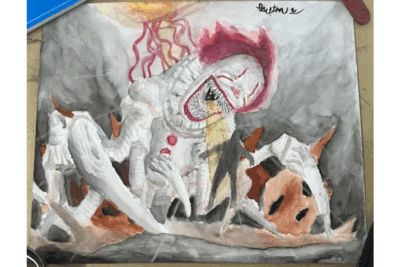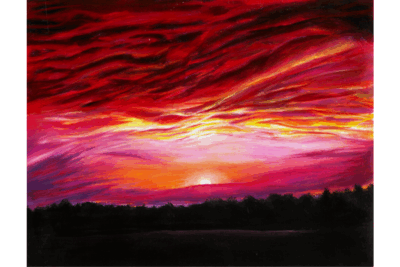Art collections don’t often involve costumes, especially prints of them from 15th century Anabaptists.
For Paul and Jean Kraybill, donors of The Kraybill Collection, there’s no art they’d rather keep.The collection, a gathered set of colored engravings and prints depicting Anabaptists in Switzerland, Alsace and the Palatinate, a historical territory under the rule of the German Empire between 1700 and 1900, was donated to the Mennonite Historical Library in 2018. Along with the collection, the current Library Gallery exhibit features photos of Dutch and Russian Mennonite costumes, contemporary Plain apparel and contextual artifacts.
The Kraybill Collection found its beginning while the Kraybills were living in Strasbourg, France on a three-year service assignment with Mennonite World Conference. After visiting with Isaac Zuercher, a long time friend and president of the Swiss Mennonite Historical Society, the Kraybills began searching art shops nearby for the engravings.
“On impulse, hardly expecting any success, I enquired of [a] shopkeeper if he had any of the prints in stock. To my astonishment he produced a few and I became the owner of my first piece,” said Paul Kraybill in a reflection for the gallery.
The art pieces in the gallery originate from across Europe, with prints and etchings coming from modern countries such as Switzerland, France, Ukraine, and Holland. Rather than following the fashion of the time, Anabaptist apparel “resisted the tyranny of new fashions,” favoring simplicity and utility over the luxurious fabrics and frills that made their way across the European fashion scene in the Baroque and Classical periods.
This theme of utility remains in the modern craft of Amish dress, as evidenced in the three outfits featured on the Library Gallery’s dress forms. All borrowed from Amish and Conservative Mennonite communities in Northern Indiana and Belleville, Pennsylvania, the clothes feature clean lines and cuts, without modern luxuries like zippers to draw an onlooker’s eye.
“The Strasbourg Discipline of 1568 simply states that the clothing of believers must be of a simple and plain style… By 1600, there is written evidence that Anabaptists were recognizable by their clothing,” said Mary Jean Kraybill, daughter of the donors who also assisted in writing and researching for the exhibit.
Other features of the exhibit include a trunk used in a Russian Mennonite family’s immigration to the United States to begin a new life farming in rural Ohio. There is also a display dedicated to Jaques Klopfenstein (1764-1843) who created an almanac published throughout western Europe from about 1812-45. The book took off because many associated the label of “anabaptiste” with good farming practices at the time.
There is also a special tribute to Melvin Gingrich (1902-75) pertaining to his research and book, “Mennonite Attire through Four Centuries.”
The exhibit is open to the public during regular library hours and will remain on display until Nov. 17. Visit goshen.edu/librarygallery or call 574-535-7418 for more information. It is also sponsored by the Mennonite-Amish Museum committee at Goshen College.




